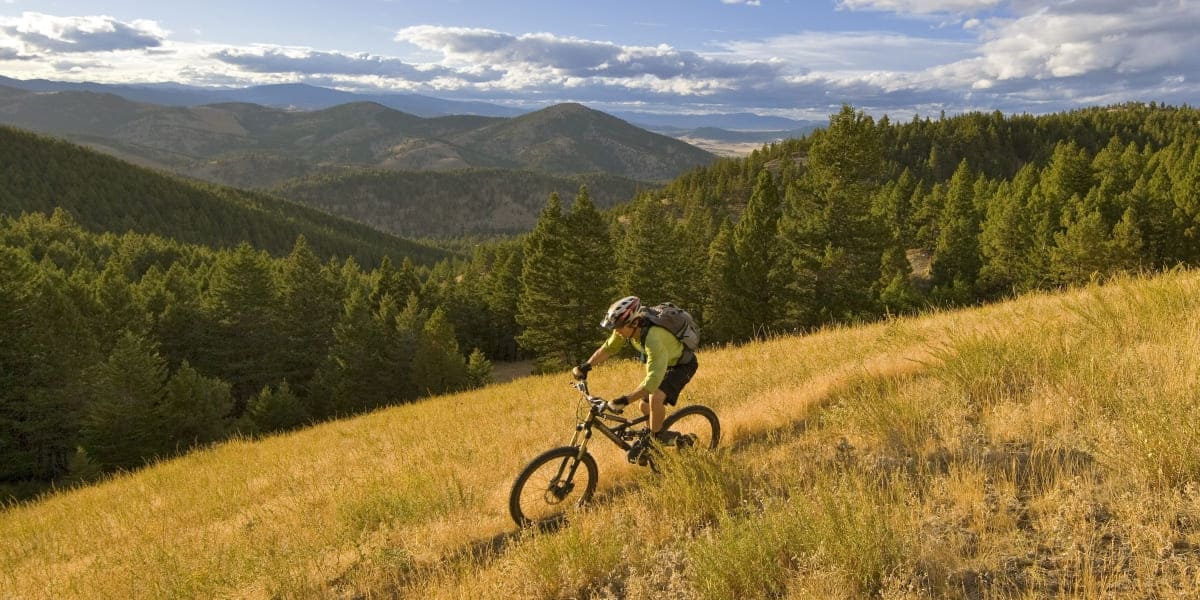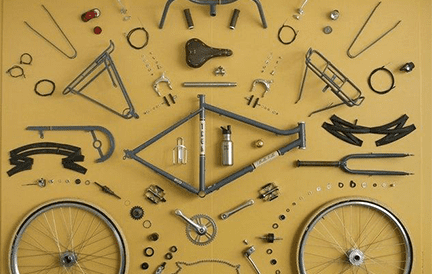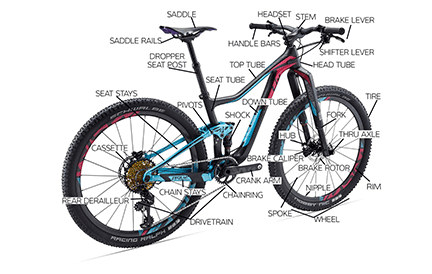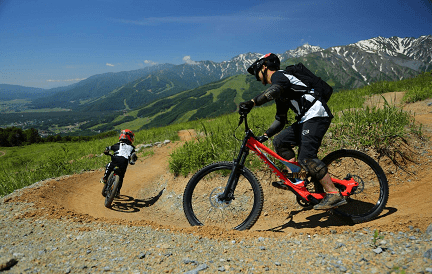Framed 29er bikes come in a variety of frame sizes to meet riders of various heights, but they are typically a better match for taller riders. Engineers have altered frames to accommodate the size of the 29inch wheel. The changes, believe it or not, result in a more natural riding experience, especially for heavier riders. The gearing on 29er bikes is “taller” than on 26er and 27.5 bikes. This essentially means that for each pedal rotation, you must cycle a little harder. The ease with which you can maintain speed helps to balance this out, although 29er bikes aren’t quite as nimble as 26er cycles.
- Part 1: Introduction To Framed 29er Mountain Bikes
- Part 2: Advantages Of Using Mtb Frame 29er
- Part 3: Disadvantages Of Using 29er Bikes
- Part 4: Are Mountain Bikes With Mtb Frame 29er Better
- Part 5: Conclusion
Part 1: Introduction To Framed 29er Mountain Bikes
What is the Purpose of a 29er Bike?
With all of the benefits of 29er bikes, it’s clear where they excel and what they’re ideal for. Long-distance rides, obstacle-filled trips, and even regular trail riding are all fantastic uses for 29er bikes. If you’re taller than 5’6″, you might prefer a 29er because they provide a more perfect choice for taller riders. A 29er mtb may be a reasonable option for your main bike unless you anticipate riding through a lot of sharp twists and switchbacks.
There are a lot of myths about frames, and they are usually reduced down to simple statements like “29ers are quicker” or “29ers climb better.” In truth, the situation is significantly more complicated. Some things will be better with big wheels, while others will be less so. Small wheels, too, have their own drawbacks. Finally, think about which option is best for your tracks and area as well as you’re riding approach and personal preferences. Of course, the wheel size is only one influence; the bike’s frame geometry suspension design tyre choices, and so on all have a greater impact on the rider than that of the wheel size alone.
Part 2: Advantages Of Using Mtb Frame 29er
There are numerous advantages to framed 29er bikes, which explains their current popularity in mountain biking. Aside from the obvious here’s a list of 29er Mountain Bikes’ Pros — yet more reason to upgrade.
Increased Momentum
29er Mountain Bikes have more speed & momentum once they get rolling. When you change to 29-inch wheels this is one of the primary things you’ll notice. You can accelerate faster and sustain that speed over longer distances because of the increased spinning mass and lower friction. You’ll also notice how very much easier pedalling appears to be.
Increased Attack Angle
When it comes to riding over rocks and obstacles, 29-inch wheels have a better “attack angle.” The increased approach angle travels faster over obstacles while simultaneously reducing the overall impact of whatever you come across. This lessens the strain on your energy & makes for a more comfortable journey all around.
Extra Traction and Grip
The tires of 29er bikes are larger and broader, allowing the greater surface area to contact the ground. You can also use lower tire pressures with larger tires. When you’re out on the trail, these two characteristics provide you with a considerable boost in grip & traction.
Improved Corner Grip and Balance
On corners, the lower tire pressures enable more surface area interaction with the ground.
Though you may seem like you’re riding upward in on the bicycle, the extra grip in turns will give you the incentive to speak them at a faster pace.
A Relaxing Ride
One of the significant benefits of 29er bikes is a Comfortable Ride, which is made possible by lower tire pressures, less impact over obstacles and the added cushioning of a larger tire. When I upgraded from a 26er to a 29er, it was a significant change. The “bounce” of the bike relative to my 26er was the very first thing I noticed. It was almost as though I was suspended in mid-air. This translates to a fun and smooth trail ride, leaving me feeling much less tired after a long day of riding.
Flat Extra Pinch Resistance
Even with lower tire pressures, 29er bikes have more air in their tires than a typical mountain bike. The tires can conform to larger things without hitting the rim as a result of this. 29-inch wheels are more resilient to pinch flats due to their high attack angle while rolling over obstructions.
Climbs And Descents Have More Stability Now
When I switched to a 29 inch Mountain Bike, I was a little nervous. I felt a lot higher on the bike than I did on my old 26er even with my seat adjusted to my height. When I got to my first hill on my neighbourhood route, this rapidly faded. Not only did I complete the part in record time, but I also felt steadier on the bike the entire time. On the same day, I comfortably sped down a lot of the trail’s fastest parts. The bike’s larger tires and redesigned geometry give it a more solid feel making it harder to edge & easier to balance.
Additional Ground Clearance
When climbing over significant obstacles, larger tires provide more clearance & less resistance. Taking a cue from the previous point, 29er bike frames should be adjusted to accommodate the bigger wheel size. The bottom bracket has much more structural strength than the ordinary bike because the hub of the vehicle is higher. It’s ideal for taller riders.
Tire Wear Is Reduced
These next two things are for those among you who thrive on efficiency. This may go unnoticed by the rest of the population. In general, 29-inch tires outlast their smaller equivalents. Due to physics, 29-inch wheels require fewer revolutions to go the same distance as a smaller tire. 29-inch tires will, of course, last longer.
Bearing wear, as well as resistance, are reduced.
Because the rotations taken by a 29er bike are fewer than those taken by smaller tire sizes, you will experience reduced bearing wear & resistance on any working components. Again, the difference is so minor that it isn’t worth quantifying. In their essay on the subject, REI does an excellent job of explaining the benefits of 29er Mountain Bikes.

Part 3: Disadvantages Of Using 29er Bikes
Even with all of the benefits of 29er bikes, there are still some instances when a smaller wheel would be preferable. In addition, our Ultimate Listing of 29er Bikes Benefits and Drawbacks would be incomplete without seeing at least a few disadvantages. While some of us may benefit from them, there are numerous reasons to keep with your present wheel size. The following are nine downsides of 29er bicycles.
Heavier Wheels
The fact that 29er bikes and 29-inch wheels, in general, are often heavier than 26 and 27.5-inch wheels is one of the most obvious downsides. Simply because they have longer spokes larger rims, and larger tires, this is unavoidable. Despite the fact that there has been a lot of study into producing lightweight wheels expect a 29er bike to be a touch heavier than your normal Mountain Bike.
A Slower Rate of Acceleration
You’ll notice a difference in 29er frame mtb bikes as well as the rest when you reach up to speed. Unfortunately, getting up to that pace on a 29er bike takes a little more effort. If you’re used to 26ers, the additional wheel weight & rotating mass may be difficult to adjust to. Once again you may not sense this until you begin riding. However, if you’re searching for a bike to sprint on, you’ll need something lighter.
More Braking Effort
The law of friction has a role in braking, which is exacerbated by the reality that 29er bikes are generally heavier. It will require a few more attempts to end with heavier spokes, rims, and tires. You might also be concerned that you’ll go through brake pads more quickly. While it may be true the quantity will most probably be insignificant.
Increased Turning Effort
If we didn’t specify some of the minor points on each side our list of 29er-bike Pros and Cons wouldn’t be complete. The first on the list of disadvantages, 29er framed mtb bikes require a little more work to turn. 29-inch wheels are more difficult to turn than 26-inch wheels because they have greater tire area in contact with the ground as well as the additional weight and size.
Tight Turns Can Be Exhausting
Following up on the previous point, mtb frame 29er bikes aren’t the best choice for tight corners. When it comes to tight twists and switchbacks, some motorcyclists call it “laborious.” This owes to the size as well as additional force required to turn.
Can Make You Feel Excessively Tall
I know I said how smooth a framed 29er bike seems once you’ve gotten used to it, but this isn’t true for everyone. Though you’re switching from small tire size to a larger one you may feel like you’re away greater on the bike, even if the fit is fine. While this may be worrisome, given that you intend to ride through forest roads on this bike you will most likely acclimatize to it fast.
Compatibility Issues
It’s reaching the point where this Con isn’t as useful as it once was. I’m referring to compatibility. Mountain bike was still mostly focused on smaller wheel sizes when the 29er debuted. This meant finding appropriate tires rims and forks for the 29-inch wheel was more difficult. Fortunately, this is no longer true, and there are lots of bike frame mtb 29er bike options available. Nonetheless, the market favours lower tire sizes the most.
Part 4: Are Mountain Bikes With Mtb Frame 29er Better
As this is a list of pros and cons for 29er frame mtb bikes, I’m sure you’re wondering if they’re superior. The answer is that it depends entirely on your needs or where you intend to ride as there is no one bike that is better than the others. What I would say is that if you’re thinking about switching, they’re absolutely worth a go. Taller riders may choose 29er bikes because of the natural choice they provide. If you plan to ride XC, 29er bikes are a good choice because of their ability to retain speed and help you go over obstacles fast. Of course, a competent rider on small wheels, can pump pop, and hop their way across the terrain while keeping their momentum but this demands energy and will exhaust you over time.
So, while huge wheels climb faster at low speeds on rough surfaces, smaller/lighter wheels may have an advantage on gentler hills or switchback climbs. The surface contact of 29ers with the terrain is greater. The length of the contact area remains specific to the given air pressure. The only difference is the geometry of the contact patch, with larger wheels having a longer, but narrower footprint.
The relevance of the footprint pattern has been debated, but we won’t go there because it won’t make and break your day, and lots of World Cup XC events have been won with smaller wheels. A 29er’s increased air volume for a certain tyre width does have a slight impact. There is more pressure in the tire to sustain your weight because it’s around 10% higher. As a result, as opposed to a 26-inch wheel you can run in a 29er, which will result in a little larger footprint and better traction.
29ers Are Quicker Than 26ers
In actuality, I believe that most of the traction & rolling advantage comes from the larger wheel’s ability to stay stable on uneven terrain due to its lower susceptibility to being bounced around. Longer trip suspension may also improve traction, and smaller wheel bikes tend to have greater suspension travel. So don’t believe claims that one wheel size is “better.” 29ers were faster than 26ers in the study.
Part 5: Conclusion
Hope so above details about framed 29er are enough to assist to choose the best mtb frame. Advantages, disadvantages, functions, comparisons and other comparisons are of great value.









